Film Appreciation
Following [1998]
Perils of Voyeurism
Cast – Jeremy Theobald, Alex Haw, Lucy Russel, Dick Bradsell, John Nolan
Produced by – Emma Thomas , Christopher Nolan, Jeremy Theobald
Music – David Julyan
Edited by – Gareth Heal & Christopher Nolan
Cinematography, Direction and Screenplay by – Christopher Nolan
Following Movie Explained
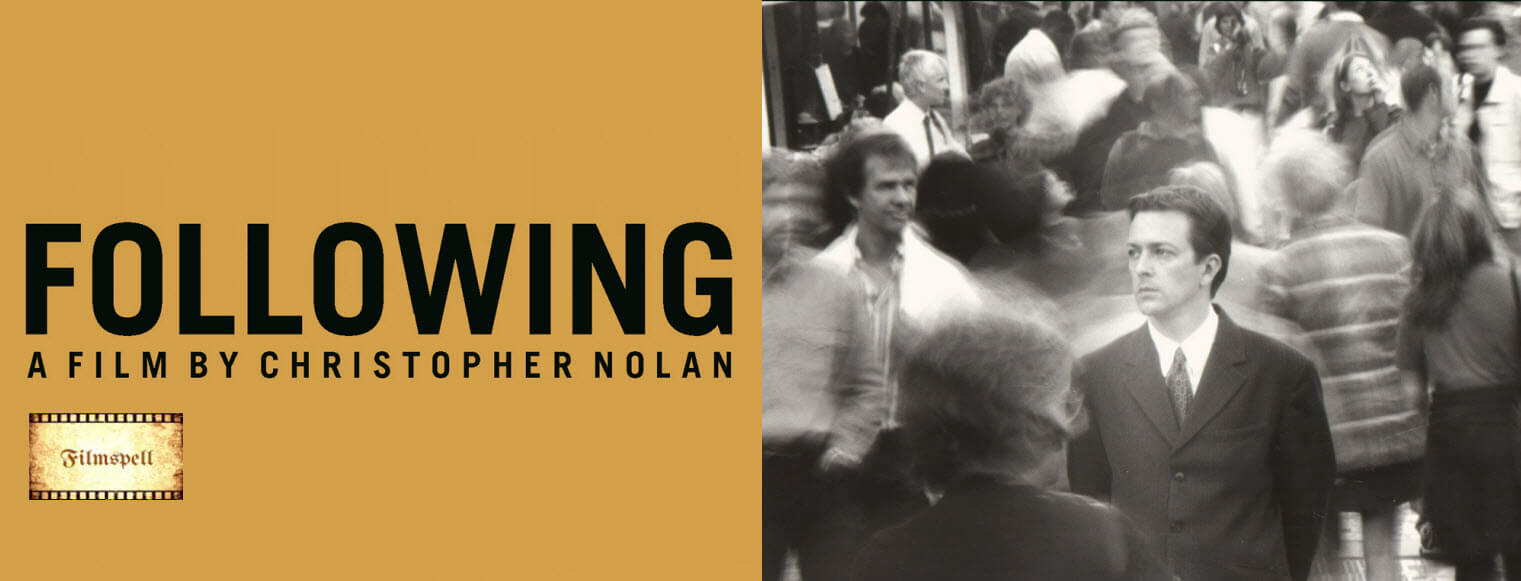
“By following the most superlative techniques of the filmmaking, Christopher Nolan crafts a neo noir film catered in his signature non-linear narrative structure, only to gather a humongous multitude of followers.”
After watching the rest of the oeuvre of the eminent filmmaker, it gets even more interesting to find out that his 1998 film Following happens to be a short but smart Noir flick, which only goes to tell that the director was an absolute prodigy and a follower of him who watches this riveting thriller after his prevalently known and much acclaimed works would fall in love with this filmmaking rather non-linearly.
The film, shot in the backdrop of the urban London is edited in a non-linear structure and it would be better to understand and appreciate the story in the linear form in the protagonist’s perspective. Like in every Nolan film, this film has a male protagonist who is struggling with the slippery nature of identity and is facing an existential crisis, which doesn’t necessarily delineate the philosophy of the filmmaker, but it can easily be inferred that the peculiar pattern is not far from being observed.
The film fades in with some uninflected images of an unidentified pair of hands wearing gloves and then putting a rather bizarre amalgamation of articles in a box; the box that happens to be nothing but motif and a Hitchcockian McGuffin in the progression of the story; which cuts to nothing but a story that starts in the voice over of the protagonist himself while he narrates to a policeman, played by John Nolan. It is a trembling tale of a young man named Bill, who self-proclaims himself as a writer, and who is also experiencing terrible loneliness and a claustrophobic emptiness; and finds no interest in the research he is doing for his writing work; and his irritability is quite evident when he throws some papers into the dustbin while reading them. And this phase of his devastating delirium happens to be the very “cause” of him “following strangers”. He consequently becomes a veritable voyeur and impetuously starts following strangers in the clamorous city of the urban London. Although, he is very cryptically curious in his following pursuit but his philosophy about “the following” is that, “he would stop following the particular stranger once he gets to know about the place the stranger lived and worked.” It’s only after Bill gets a little over the board in following a guy latterly identified as Cobb (the man in the suit); he gets entangled in a rather cunningly handled criminal conspiracy.
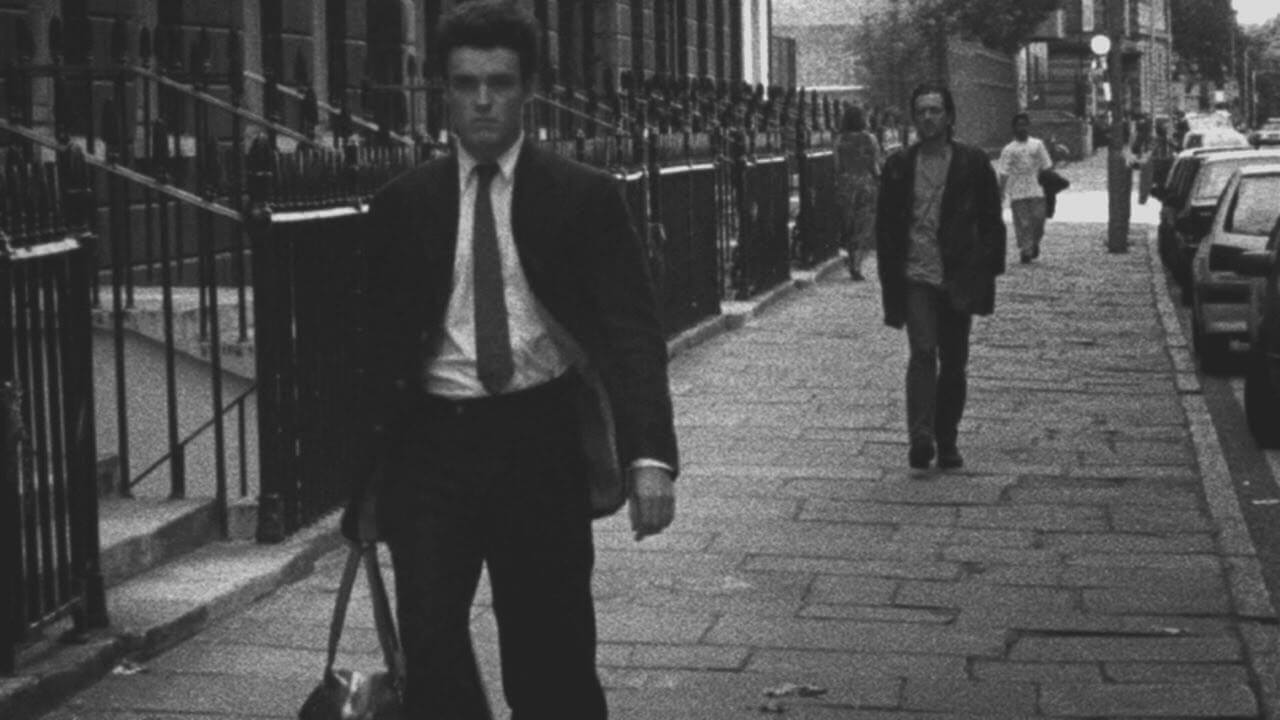
As the film is structuralized in the non-linear storytelling, it would be better to elucidate the story with respect to the protagonist’s appearance in a linear form. Now, throughout the story and the various mise-en-scenes, the protagonist is observed to be in three different appearances, which for our reference would be called as Act 1 (Bill with long hair), Act 2 (Bill suited up) and Act 3 (Bill with scarce) as shown in the below collage –

In all three Acts, Bill is also writing about his current experiences of “the following”, which has an ambivalent air to it, (but that would be discussed later).
While following Cobb, Bill takes his penchant a bit too far and chips into a restaurant, because an enigmatic bag held by Cobb happens to catch his attention. There is a quickly taken and edgily cut “point of view shot” of the bag taken from the perspective of Bill through a window of the restaurant, which explicates the fact that Bill was fascinated with mystery behind the bag. Cobb, who has been observing Bill following him and seemingly suspects vigilance approaches the gullible young man and asks; “why are you following him?”; and then an audience observes Christopher Nolan’s much talked about finesse in directing the actors, when Cobb is firm and confident in his dialogue delivery, while Bill is very clearly intimidated by Cobb and keeps fidgeting in nervousness. The stranger, Cobb, introduces himself to Bill as a serial burglar and fascinates Bill to join him for some spontaneous yet wicked burglary. Now, Cobb has some very philosophical idea of burglary, which is, “Take it away, and show them what they had”; and this conviction bewitches the creative guy in Bill and somehow the amazed young man succumbs to the beguiling charm and the nervy thrill of the serial burglary and decides to be Cobb’s partner in crime.
Bill starts accompanying Cobb for various burglaries, in which an audience gets to know about the character of Bill and Cobb both, who are nothing but contrasting characters; which is to say when Cobb is inscrutably canny, Bill happens to be nothing but a discernible folly. Nolan uses some very minute details that are intrinsic to habitual criminals. There are shots in which Cobb presses a door bell with his tie, obviously to avoid any trace of fingerprints that can lead to a trouble in the forensic investigations.
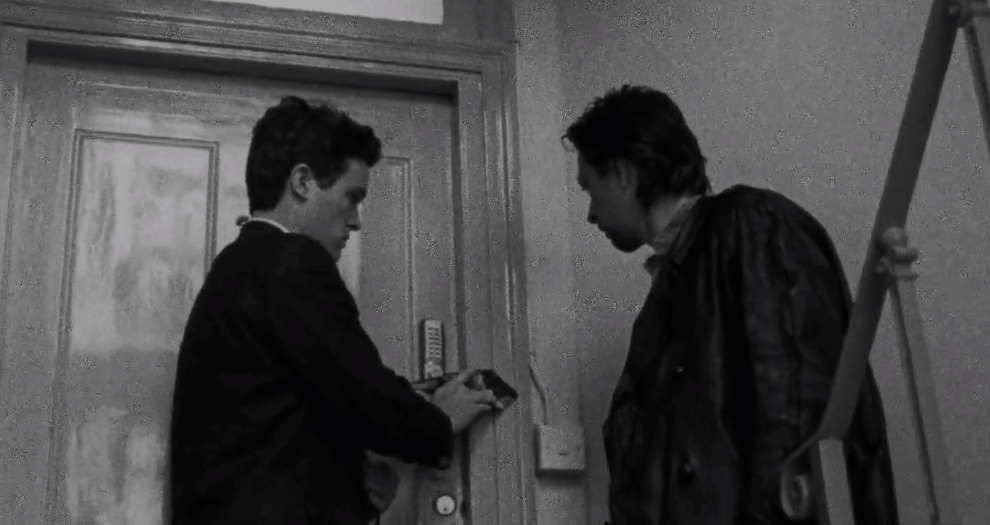
After few visits, Bill wants to attempt break-ins on his own; but Cobb flippantly suggests him to change his look; paradoxically to make him a sophisticated crook. Bill now wittingly identifies himself as Daniel Lloyd (a name in the stolen credit card that Cobb gives him, which was once used by Cobb to pay the bill in the restaurant). He changes his appearance as Cobb had directed him and adorns a black suit with a tie tucked to illuminate the urban sophistication, a look that leads to nothing but Act 2 of the linearized screenplay, where he happens to meet a blonde girl whose flat he and Cobb had already burgled. The box that was shown in the fade-in scene happens to be hers. The blonde is actually an ex-girlfriend of a bald guy who is a brutally malevolent and fatally dangerous criminal as she narrates to Bill and it is quite evident when we see a shot of the bald guy killing another guy in front of her by bludgeoning his head by hammer, after cruelly torturing him by tearing his fingers first. The bald guy is blackmailing her for what sounds to be some pornographic and expository photographs of the girl. Bill promises her to get those back along with money from the place where they are stashed by the bald guy.
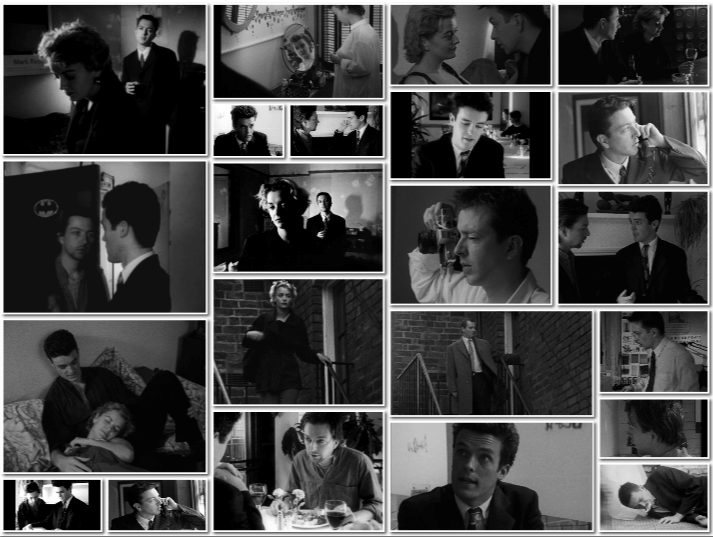
Now, Cobb shows a fierce indignation about the idea that Bill is pursuing a relationship with the blonde girl and he is ready to burgle a criminal’s premises to recover those absurd photographs. Cobb beats the hell out of Bill, which leaves some scars on Bill’s face, which leads to the Act 3 appearance of the protagonist. In an attempt to get those photographs, Bill also burgles money, only to be attacked by an unidentified man. Bill hits him with a hammer and runs away. Bill observes the photos as nothing but some redundant and harmless modelling shots and visits the blonde for answers. As she narrates him, it all happens to be a Machiavellian conspiratorial plot cleverly crafted by Cobb with her. There are some non-linear cut shots of Cobb with the blonde which happens to be the surprise elements of the film. So, in the Act 3, the protagonist’s dramatic need takes a seismic shift and leads him to kill a man, only to know that his existence, like any other, never mattered to the girl he started falling for. By the time the blonde finishes the back-story, Bill learns that he was utilized to replicate Cobb’s burglaries for this ulterior reason. He immediately leaves the blonde’s abode. The very thought of having killed a person for this façade bites his conscience and he decides to go to the police, only to know that someone has killed the blonde and there is a rod with his fingerprints found at the scene of crime, and there are crosscut parallel shots in which an audience learns that Cobb was working for the bald criminal, as the blonde blackmailed him for the aforementioned hammer murder she had witnessed. In the fade out, a shot has been taken where we observe Cobb again becoming merely an inseparable part of the crowd.
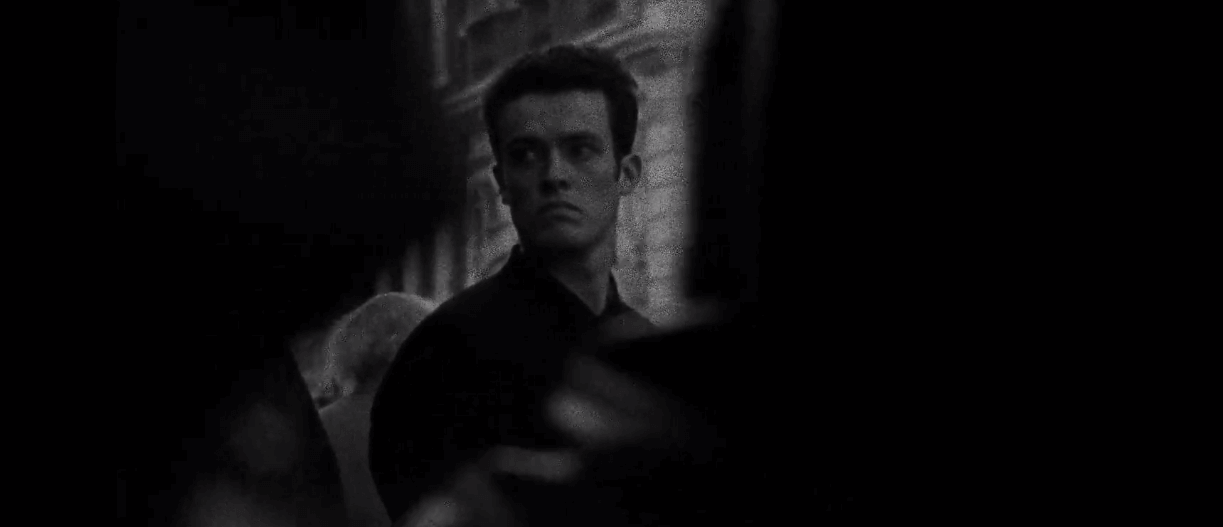
The film is among the most articulate works of the director and the cinematography observes his signature style of taking shots using a shallow depth of field, in which the camera follows the character that has to be emphasized and the rest of the things are on a different layer of the frame. The set up is quite urban with sophisticated costumes. The background music adds up to the thrill at many occasions and gives palpitations. But, where Following becomes triumphant is at the editing table, because the film shows the three acts of the screenplay through crosscuts and abrupt blackouts; and confounds an audience mind. Like every non-linear structure of Christopher Nolan’s work, this observes retrocausality in which the effect comes before the cause and this is repeated in numerous occasions in the progression of the movie. For an seventy minutes runtime, the film manages to imbue an ambiguity too. There is a scene in which the protagonist (of the Act 1 with long hair) is typing his experiences, and the scene is kept in the midpoint of the runtime; and by observing Bill’s room which also has photos of Stanley Kubrick’s 1980 picture The Shinning, one also might think that the events are nothing but the narration of the book Bill happens to be writing ala’ one of the interpretations of The Shinning. Every main character has a justified screen time and the MacGuffin’s shots are taken in such an edgy way that it adds up to the curiosity of an audience.
All in all, Following is an engrossing thriller, which also gets quite thought provoking when it also evokes a question that asks;
“What if the one you are following is following you?”
And that is what Following achieves…
















Very well-written. Thank you for summing it up beautifully!